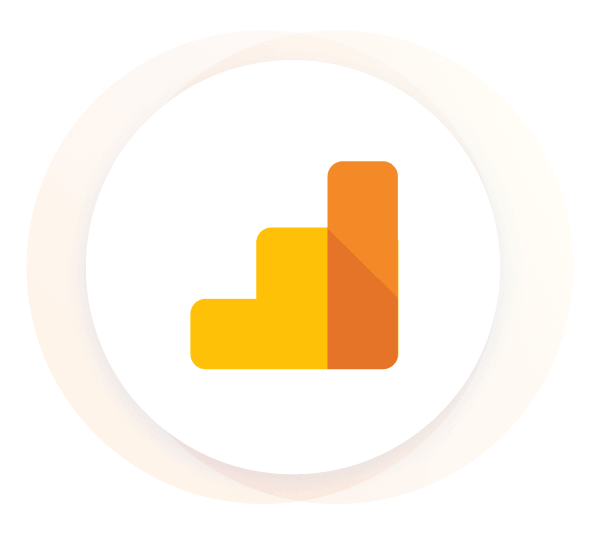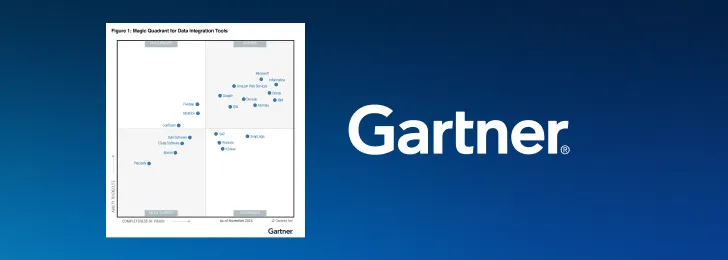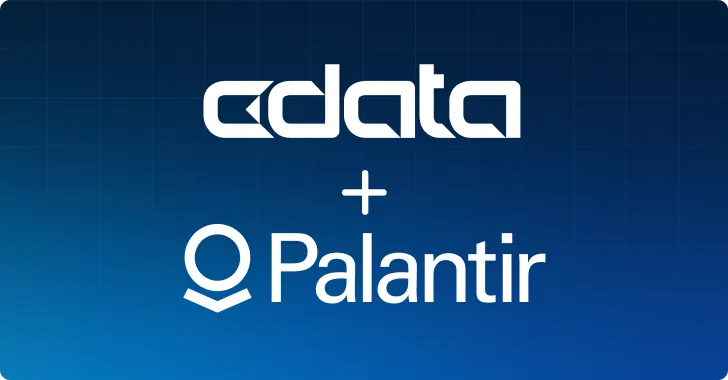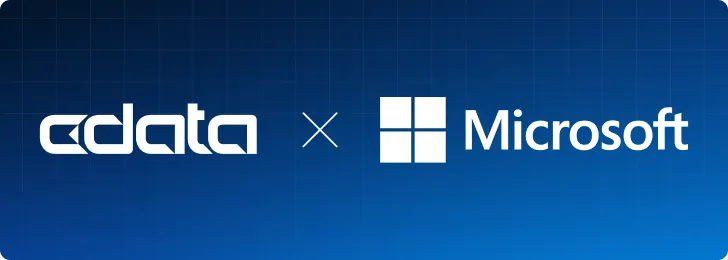
In the rapidly evolving digital landscape, businesses constantly seek ways to optimize their data management processes, understand user behavior, track website performance, and strengthen business offerings. Analytics integrations act as the gateway to unlocking this potential. They simplify data exchange between systems, enabling you to enhance decision-making, optimize workflows, and gain a competitive advantage.
Google Analytics (GA4), a powerful web analytics solution, offers valuable insights into user interactions, traffic origins, and conversion metrics. But to fully harness its capabilities, businesses must integrate it with other tools and platforms. This article delves into the fundamentals of analytics integrations, outlining their benefits for your organization, and explores the top ten GA integrations. We’ll also showcases the broader spectrum of analytics integrations offered by CData, facilitating enhanced data management within your business.
7 Benefits of having integrated analytics in your business
In a world fueled by data, businesses must collect information strategically while turning insights into action. Analytics integrations are increasingly vital to this process, acting as the connective tissue that allows data to flow smoothly between platforms.
Here are seven important benefits of having integrated analytics in your business:
Unified view of data: Disparate data sources paint an incomplete picture. Integrations gather data from your website, CRM, ERP, marketing platforms, and more, allowing you to see the big picture and draw more impactful conclusions.
Holistic insights: By breaking down data silos, integrated analytics give you a 360-degree view of your customers. It helps you uncover patterns, trends, and customer journeys beyond a single platform's capabilities.
Richer insights & smarter decisions: A comprehensive data environment leads to well-informed, data-backed decisions. Integrated analytics help you identify growth opportunities, refine marketing campaigns, and address potential issues proactively.
Improved efficiency and automation: Automate data flows and reporting tasks instead of tedious manual data pulls. Your team can dedicate their time to analysis and action rather than collecting and cleaning data.
Granular analysis: Go beyond surface-level metrics. With integrated data, you can drill down into subsets of your customer base, compare various campaigns, and even see the impact of a single social media post across your digital footprint.
Personalization: Deliver tailored experiences with a deep understanding of individual customer needs and preferences. Integrated analytics let you segment your audience based on shared behaviors and deliver targeted messaging.
Competitive advantage: While competitors struggle with information gaps, your access to rich insights enables greater agility, customer responsiveness, and strategic decision-making, helping you retain existing customers and outpace the competition.
10 Indispensable Google Analytics integrations
Google Analytics reigns supreme as the cornerstone of web analytics for millions of businesses. Yet, when used as a standalone tool, it offers just a partial glimpse into your overall operations. To access the full power of your data, strategic integrations with various other platforms are key. Let's explore the top ten Google Analytics integrations supported by CData Drivers and CData Connect AI, categorized by business domains, that can enhance your analytics capabilities:
Google Analytics - Salesforce Integration: This powerhouse integration offers a 360-degree view of customer journeys and enables businesses to leverage data from both platforms. By linking them, you can track milestones, gain insights through segments, and optimize performance across online channels. This collaboration links web behavior with sales activities for improved lead scoring, targeted marketing, and a closed-loop view of your ROI.
Google Analytics - AWS Databricks Integration: Integrating Google Analytics with AWS Databricks empowers you to harness the power of your web analytics data within Databricks. This connection facilitates advanced analysis, machine learning model development, and in-depth reporting.
Google Analytics - Azure Analysis Services Integration: This integration streamlines data warehousing and allows you to model complex relationships in your data. Utilizing this integration, you can create personalized dashboards and conduct an in-depth exploration of meaningful metrics.
Google Analytics - Amazon QuickSight Integration: This integration supports informed decision-making by leveraging the capabilities of Amazon's cloud-powered business analytics service. You can create visualizations, perform ad-hoc analysis, and extract insights from a variety of data sources, including Google Analytics, using intuitive, browser-based dashboards.
Google Analytics - Power BI Integration: Google Analytics and Power BI seamlessly integrate, empowering data-driven decisions. By connecting Google Analytics data to Power BI, you can gain business insights beyond website behavior. Real-time visualizations, dynamic maps, and holistic performance views help you enhance marketing strategies and customer engagement.
Google Analytics - Tableau Integration: By connecting the wealth of information found in Google Analytics with Tableau's flexibility, you can transform raw website data into compelling insights, leading to better decision-making and optimization of your online strategies.
Google Analytics - Looker Studio Integration: By connecting Looker Studio with Google Analytics, businesses gain insights into visitor behavior, acquisitions, and website usage. Additionally, you can explore Google Analytics data in conjunction with other enterprise data sources to achieve a comprehensive view of your business performance.
Google Analytics - SAP Analytics Cloud Integration: With this integration, you can combine the power of Google Analytics with SAP Analytics Cloud for comprehensive business intelligence focusing on financial, operational, and customer data.
Google Analytics - Microsoft Excel Integration: While basic, this integration allows you to work with Google Analytics data in the familiar environment of Excel for quick calculations, custom reports, and accessible analysis.
Google Analytics - Alteryx Designer Integration: By connecting Google Analytics data to Alteryx Designer, businesses gain insights, perform self-service BI, and enhance analytics. With this integration, you can combine the AI-powered data cleaning and preparation prowess of Alteryx Designer with Google Analytics for streamlined transformations and powerful analytical outcomes.
The choice isn't whether to use analytics, but rather how well you'll embrace integration to achieve its full potential. As your business grows and the digital landscape evolves, integrated analytics will be the key to staying ahead. These integrations allow you to break down data silos, get a complete picture of your customer journey, and gain concrete actionable insights. Integrating Google Analytics with these powerful tools gives you the data-driven advantage needed to thrive in the competitive digital arena.
Read more about GA4 integration and how CData simplifies GA4 reporting.
Extend your analytics toolkit with CData
In addition to helping with the widely used integrations, as elaborately described in the section above, CData provides specialized drivers and connectors for numerous analytics platforms, allowing you to consolidate data sources and craft comprehensive solutions. It enables seamless connections across reporting tools and social media platforms that inform strategic business decisions.
Here are some of the analytics platforms which CData supports integration with:
Reporting tools
Tableau CRM Analytics: Tableau CRM Analytics (formerly Einstein Analytics) is a powerful Salesforce-native analytics platform. It’s a cloud-based business intelligence tool that empowers you to transform complex data into clear, actionable insights. You can build interactive dashboards, leverage AI-generated predictions, and embed these analytics directly into your workflows. Whether you're focused on sales, marketing, or operations, Tableau CRM Analytics illuminates the patterns in your data that drive success.
To work with live Tableau CRM Analytics data, check out our integration guides and tutorials.
Adobe Analytics: Adobe Analytics, part of the Adobe Experience Cloud, is a robust tool for customer journey analysis. It captures rich data about website behavior, mobile apps usage, and cross-channel interactions. Adobe Analytics empowers you to identify segments, optimize marketing campaigns, and deliver personalized experiences for better business outcomes.
To work with live Adobe Analytics data, check out our integration guides and tutorials.
SAP BusinessObjects BI: SAP BusinessObjects BI is a robust on-premise business intelligence suite designed for large-scale operations. It offers diverse capabilities ranging from traditional reporting and data visualization to self-service analytics and dashboard creation. SAP BusinessObjects BI provides a centralized platform to turn your company's data into actionable insights.
To work with live SAP BusinessObjects BI data, check out our integration guides and tutorials.
Social Media analytics tools
Facebook Ads: Facebook Ads offers businesses a highly targeted way to reach their audience on the world's largest social media platform. Leveraging Facebook's in-depth user data, you can precisely define the demographics, interests, and behaviors of the people your ads should reach. This targeted approach lets you connect with potential customers more effectively and track your ad performance.
To work with live Facebook Ads data, check out our integration guides and tutorials.
Twitter Ads: Twitter Ads allow businesses to promote tweets, accounts, and trends to a targeted audience on the Twitter platform. This includes options for tailored campaigns based on demographics, interests, and behavior. Twitter Ads help increase brand awareness, drive website traffic, generate leads, and boost conversions.
To work with live Twitter Ads data, check out our integration guides and tutorials.
The CData difference
CData serves as a powerful bridge between Google Analytics and various other analytics tools. With our robust drivers & connectors, businesses can seamlessly access real-time data, create customized reports, and gain valuable insights. Whether you’re integrating with BI platforms, automating workflows, or building custom applications, CData ensures unmatched query performance and comprehensive access. Additionally, our fully managed SaaS-based solution, CData Connect AI, simplifies data integration, empowering informed decision-making across domains.
As always, our support team is ready to answer any questions. Have you joined the CData Community? Ask questions, get answers, and share your knowledge in CData connectivity tools. Join us!
Get a free trial
Try CData today
Sign up for a 30-day free trial today to explore your integration possibilities and unlock the full potential of your Google Analytics data.





